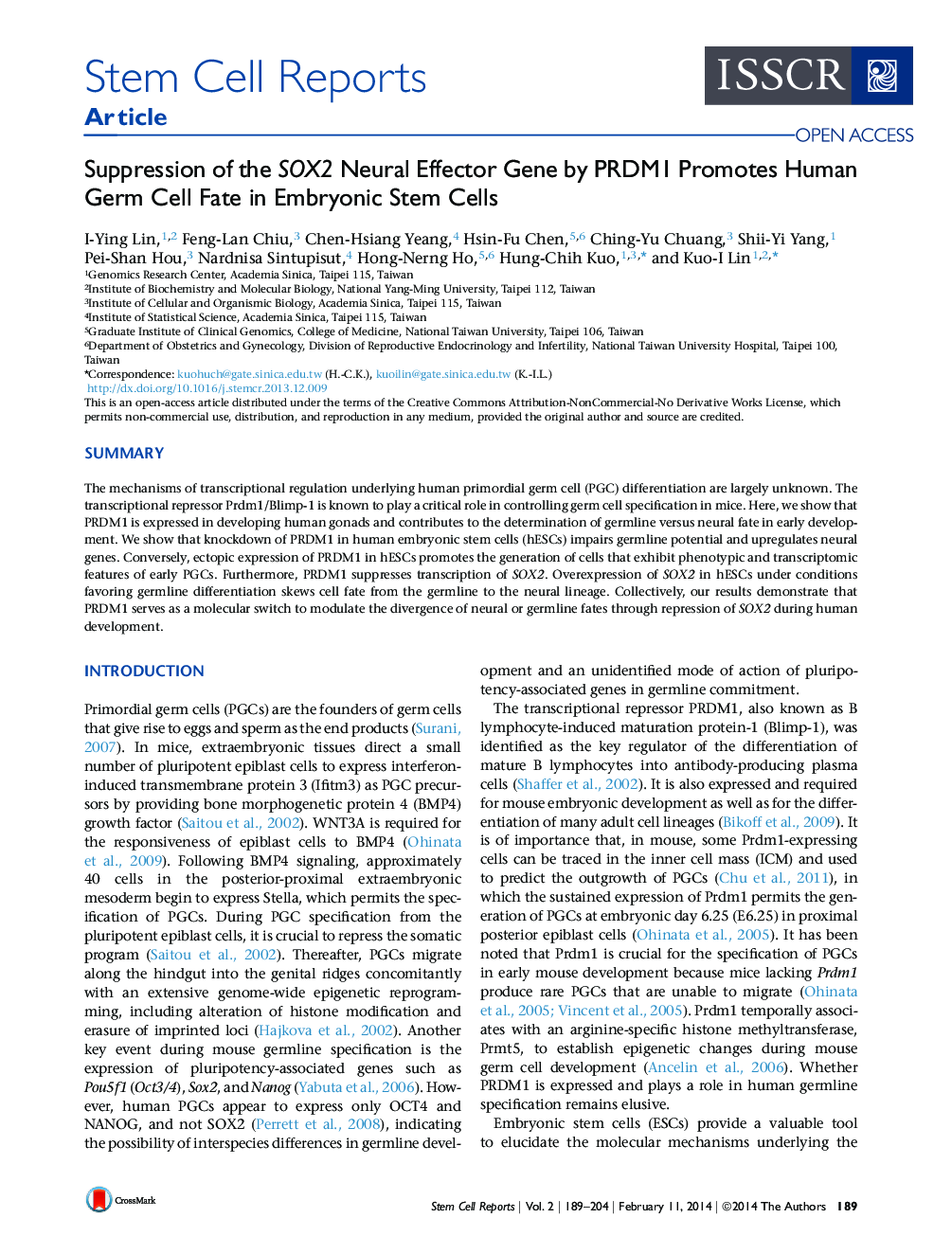| Article ID | Journal | Published Year | Pages | File Type |
|---|---|---|---|---|
| 2093464 | Stem Cell Reports | 2014 | 16 Pages |
•PRDM1 serves as a molecular switch that determines neural or germline fate in human•PRDM1 is expressed in early germ cells of developing human fetal gonads•PRDM1 is expressed in hESC-derived germ cells and directs germline differentiation•Germline differentiation in hESC requires PRDM1-mediated suppression of SOX2
SummaryThe mechanisms of transcriptional regulation underlying human primordial germ cell (PGC) differentiation are largely unknown. The transcriptional repressor Prdm1/Blimp-1 is known to play a critical role in controlling germ cell specification in mice. Here, we show that PRDM1 is expressed in developing human gonads and contributes to the determination of germline versus neural fate in early development. We show that knockdown of PRDM1 in human embryonic stem cells (hESCs) impairs germline potential and upregulates neural genes. Conversely, ectopic expression of PRDM1 in hESCs promotes the generation of cells that exhibit phenotypic and transcriptomic features of early PGCs. Furthermore, PRDM1 suppresses transcription of SOX2. Overexpression of SOX2 in hESCs under conditions favoring germline differentiation skews cell fate from the germline to the neural lineage. Collectively, our results demonstrate that PRDM1 serves as a molecular switch to modulate the divergence of neural or germline fates through repression of SOX2 during human development.
Graphical AbstractFigure optionsDownload full-size imageDownload as PowerPoint slide
